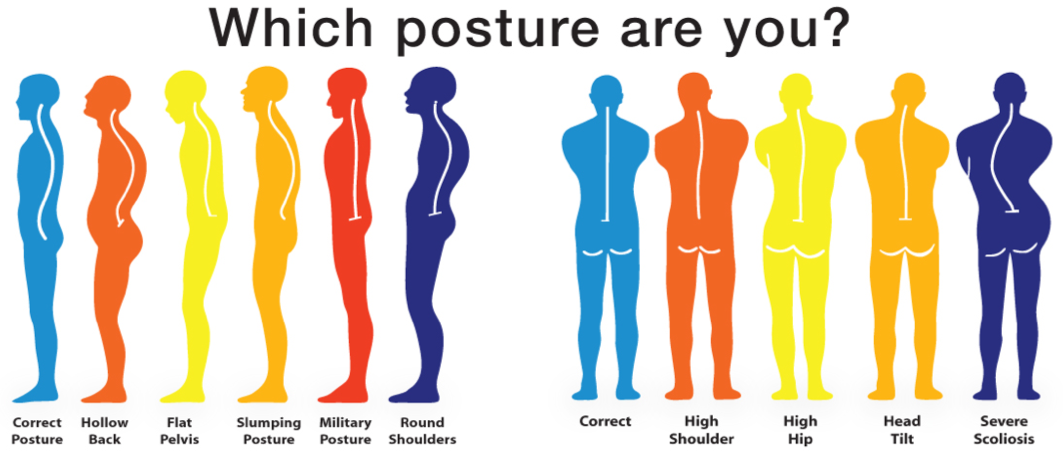21 Tips for Better Posture
What parents haven’t caught themselves telling their children to “stand up straight?” My parents said it to me, your parents said it to you, and there’s a good chance if you have kids you’ve said it too – but why is it important to stand up straight in the first place?
Your posture is the way you hold your structure, whether standing, sitting or lying down. It’s the way that you position yourself in space, and because of the constant, never-ending downward pull of gravity, any flaws or imperfections in the way you stand, sit or lie down can become serious postural conditions, which invariably lead to health problems.
 Developing the habit of good posture not only helps you to look better, but it helps your body to work better too. It’s not difficult, but it does take a bit of self-discipline to raise your standards and make your spine healthier. How do you reset your posture to begin with? What does good posture look like in the first place?
Developing the habit of good posture not only helps you to look better, but it helps your body to work better too. It’s not difficult, but it does take a bit of self-discipline to raise your standards and make your spine healthier. How do you reset your posture to begin with? What does good posture look like in the first place?
The American Posture Institute recommends seven tips for good standing posture:
- Keep your shoulders back and relaxed
- Pull in your abdomen
- Keep your feet about hip distance apart
- Balance your weight evenly over both feet
- Let your arms and hands hang naturally at your sides
- Try not to tilt your head forward, backwards or sideways
- Make sure your knees are relaxed, not locked
They recommend these seven tips for good sitting posture:
- Pick the right height chair, where your feet rest flat on the floor with your knees level with your hips.
- Have a footstool or yoga block available to prop up your feet if it’s more comfortable, or if your seat is too tall.
- Sit back in your chair.
- If you need more support, put a rolled-up towel or pillow behind your low back.
- Stretch the top of your head toward the sky and tuck your chin slightly.
- Keep your neck and upper back comfortably straight.
- Keep your shoulders relaxed, not hunched, rounded or pulled too far backward or forward.
And here are seven tips for better lying down or sleeping posture:
- Aim to lie in a neutral and natural position.
- It’s best to sleep on your side with a pillow supporting your neck.
- Place a cushion between your knees, again to retain proper alignment. This takes pressure off your spine, discs and nerve system.
- You can also lie on your back with a pillow supporting your knees.
- Sleep on the right mattress and pillow, not too soft or firm, to comfort.
- Mattresses and pillows wear out over time, so replace them when needed.
- If you can’t get comfortable in any position, see your family chiropractor to check your spinal alignment.
You’ve probably seen a child struggling with a big heavy backpack, leaning forward to balance the weight and putting strain across the entire spine. You’ve probably also seen ladies toting heavy handbags, pulling one shoulder down significantly below the other one. These are examples of activities of daily living that interfere with normal healthy posture.
It’s essential that we become more conscious of improving and preserving our posture. The function of our brain and nerve system depend on healthy spinal movement, and poor posture prevents normal movement.
Every person has a slightly different spinal structure, and for that reason we may need some additional coaching and guidance on keeping the whole family’s posture as healthy as possible. Your chiropractor is your neighborhood posture expert – schedule exams for the whole family to catch problems early and promote health and wellness.

